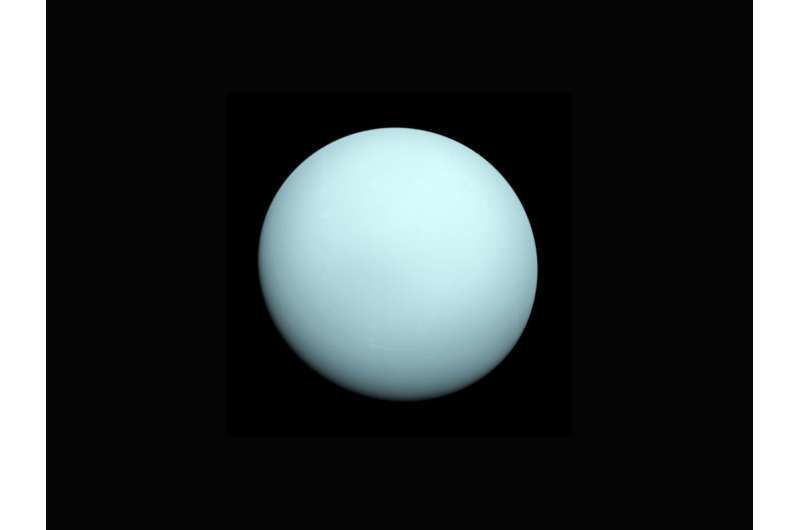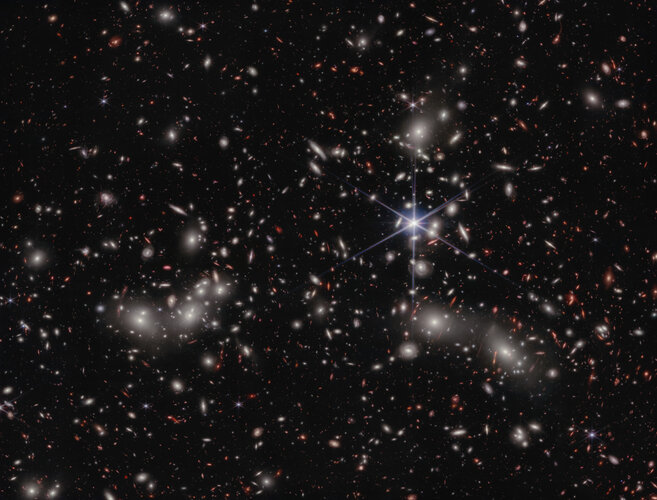Enlisting AI to secure the space domain
Friday, 17 February 2023 18:47
AI will transform how decisions are made across every human activity, especially as nations begin to further operate and compete in space.
Opinion | Inflation’s squeeze on space and national security contracts
Friday, 17 February 2023 17:13
For companies who provide unique capabilities, or deliver sophisticated platforms or components to the Department of Defense, the intelligence community, or NASA, inflationary pressures and delivery delays are seriously challenging America’s defense industrial base and our future efforts in space
Inflation’s squeeze on space and national security contracts
Friday, 17 February 2023 17:13
For companies who provide unique capabilities, or deliver sophisticated platforms or components to the Department of Defense, the intelligence community, or NASA, inflationary pressures and delivery delays are seriously challenging America’s defense industrial base and our future efforts in space
FAA proposes fining SpaceX for missing launch data
Friday, 17 February 2023 16:58
The FAA announced Feb. 17 it is seeking to fine SpaceX $175,000 for failing to provide collision avoidance data before a Falcon 9 launch last year.
AI startup using satellite imagery to trace the path of Chinese balloon
Friday, 17 February 2023 16:15
Days after the Chinese spy balloon was shot down by the U.S.
Deep space smallsats face big challenges
Friday, 17 February 2023 16:00
More than half the cubesats that launched on Artemis 1 in November have suffered problems, underlining the myriad challenges facing small satellites beyond Earth’s orbit.
Planetary scientist lays out arguments for sending a dedicated probe to Uranus
Friday, 17 February 2023 15:35
Kathleen Mandt, a planetary scientist at Johns Hopkins University's Applied Physics Laboratory has published a Perspectives piece in the journal Science arguing that NASA should send a dedicated probe to the planet Uranus. She notes that a window is opening in 2032 for the launch of such a probe.
Planetary scientists have spent far more time studying Mars than they have other planets, partly due to its close proximity and partly due to the fact that Mars has a surface upon which craft can land. Planets that have thick atmospheres, on the other hand, are more difficult to study, especially if they provide no place to land.
Still, Mandt argues, such research is important. And initiating the development of a probe to study Uranus, she adds, would be a good start. She further notes that now would be a good time to begin such plans because the next good window for launching a Uranus probe would be in 2032, when Jupiter's alignment with Earth will allow a slingshot maneuver toward Uranus.
Planetary scientist lays out arguments for sending a dedicated probe to Uranus (Update)
Friday, 17 February 2023 15:35
Kathleen Mandt, a planetary scientist at Johns Hopkins University's Applied Physics Laboratory has published a Perspectives piece in the journal Science arguing that NASA should send a dedicated probe to the planet Uranus. She notes that a window is opening in 2032 for the launch of such a probe.
Planetary scientists have spent far more time studying Mars than they have other planets, partly due to its close proximity and partly due to the fact that Mars has a surface upon which craft can land. Planets that have thick atmospheres, on the other hand, are more difficult to study, especially if they provide no place to land.
Still, Mandt argues, such research is important. And initiating the development of a probe to study Uranus, she adds, would be a good start. She further notes that now would be a good time to begin such plans because the next good window for launching a Uranus probe would be in 2032, when Jupiter's alignment with Earth will allow a slingshot maneuver toward Uranus.
Week in images: 13-17 February 2023
Friday, 17 February 2023 13:10
Week in images: 13-17 February 2023
Discover our week through the lens
Juice one step closer to launch
Friday, 17 February 2023 13:00 Video:
00:04:54
Video:
00:04:54
After many years of study, development, building and testing, ESA’s Jupiter Icy Moons Explorer, Juice, has finally arrived at Europe’s Spaceport in Kourou, French Guiana. At the end of 2022 the spacecraft underwent its final thermal vacuum test at an Airbus Defence and Space facility in Toulouse, as well as its final software verification tests, whereby it was controlled from the ESOC mission control centre in Darmstadt, Germany.
Soon, an Ariane 5 will lift Juice into orbit and send it on its journey to explore the largest planet in our Solar System and its three icy moons, Europa,
Japan aborts H3 launch moments before liftoff
Friday, 17 February 2023 11:58
Japan’s space agency JAXA aborted the long-awaited first launch of H3 rocket Feb.
First Launcher orbital transfer vehicle fails
Friday, 17 February 2023 11:54
Launch services startup Launcher said its first orbital transfer vehicle failed shortly after deployment on a launch last month, but that it will fly upgraded versions of the vehicle later this year.
Sidius Space reaches an agreement with a Dutch organization to Deploy Lasercom Mission
Friday, 17 February 2023 10:06 The Netherlands Organization for Applied Scientific Research, known as TNO, has awarded a $2.5 million contract to a satellite and space defense manufacturer Sidus Space.
On February 15 Sidius Space announced, "We are honored to be selected by TNO as its mission partner for the HemiCAT technology," said Carol Craig, Sidus Space Founder and CEO. "This partnership will allow us to demonstrat
The Netherlands Organization for Applied Scientific Research, known as TNO, has awarded a $2.5 million contract to a satellite and space defense manufacturer Sidus Space.
On February 15 Sidius Space announced, "We are honored to be selected by TNO as its mission partner for the HemiCAT technology," said Carol Craig, Sidus Space Founder and CEO. "This partnership will allow us to demonstrat Former football player revamps NASA air filter invention
Friday, 17 February 2023 10:06 From grimy dirt and dangerous bacteria to tiny spores and pollen grains, air filters remove harmful particles from the air we breathe. But changing filters once they're soiled can prove time-consuming, costly, and complicated - especially in space.
On spacecraft, air filter systems must be cleaned constantly. To get the job done easier, NASA invented a technology called the Multi-Stage Fil
From grimy dirt and dangerous bacteria to tiny spores and pollen grains, air filters remove harmful particles from the air we breathe. But changing filters once they're soiled can prove time-consuming, costly, and complicated - especially in space.
On spacecraft, air filter systems must be cleaned constantly. To get the job done easier, NASA invented a technology called the Multi-Stage Fil Astroscale wins Dstl funding for exploration of future Space-Based Space Domain Awareness missions
Friday, 17 February 2023 10:06 Astroscale has won funding from the MOD Defence Science and Technology Laboratory funding to explore space-based space domain awareness (SB-SDA) mission concepts for launch in the 2030s.
Astroscale Ltd. formed the winning consortium teaming with Raytheon NORSS and SJE Space Ltd for the project. The aim of the study is to advance knowledge of space-based space domain awareness (SB-SDA) thro
Astroscale has won funding from the MOD Defence Science and Technology Laboratory funding to explore space-based space domain awareness (SB-SDA) mission concepts for launch in the 2030s.
Astroscale Ltd. formed the winning consortium teaming with Raytheon NORSS and SJE Space Ltd for the project. The aim of the study is to advance knowledge of space-based space domain awareness (SB-SDA) thro 
